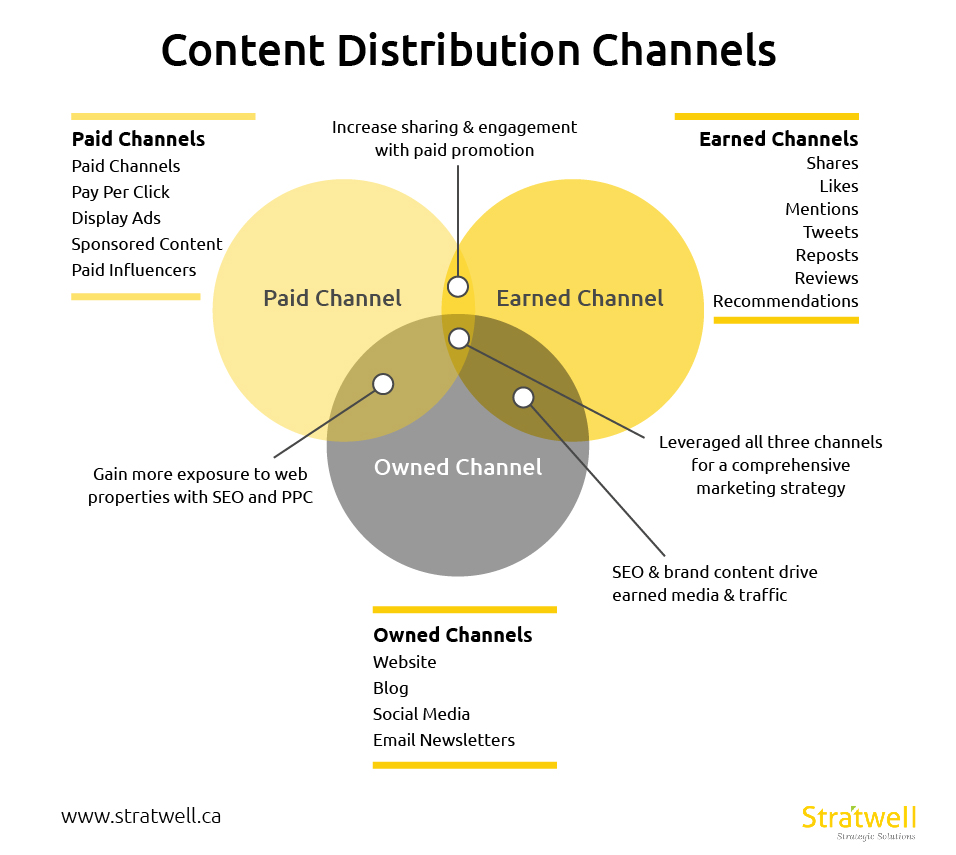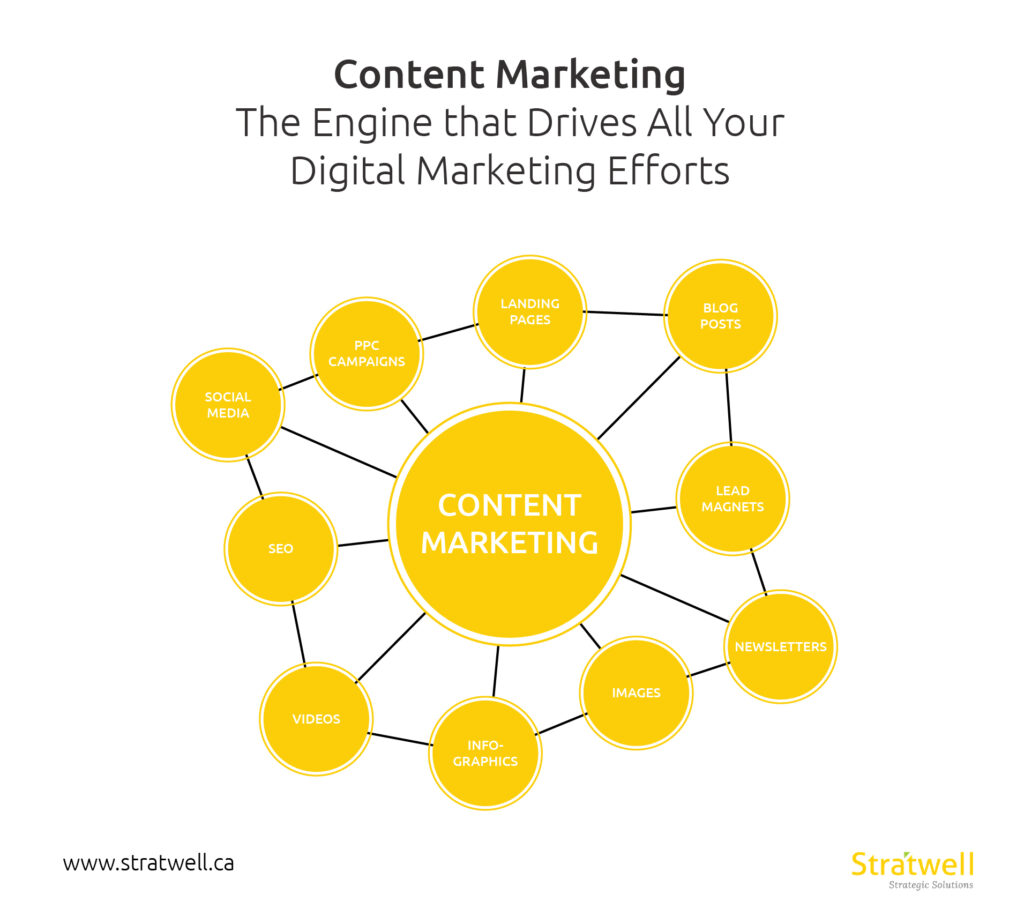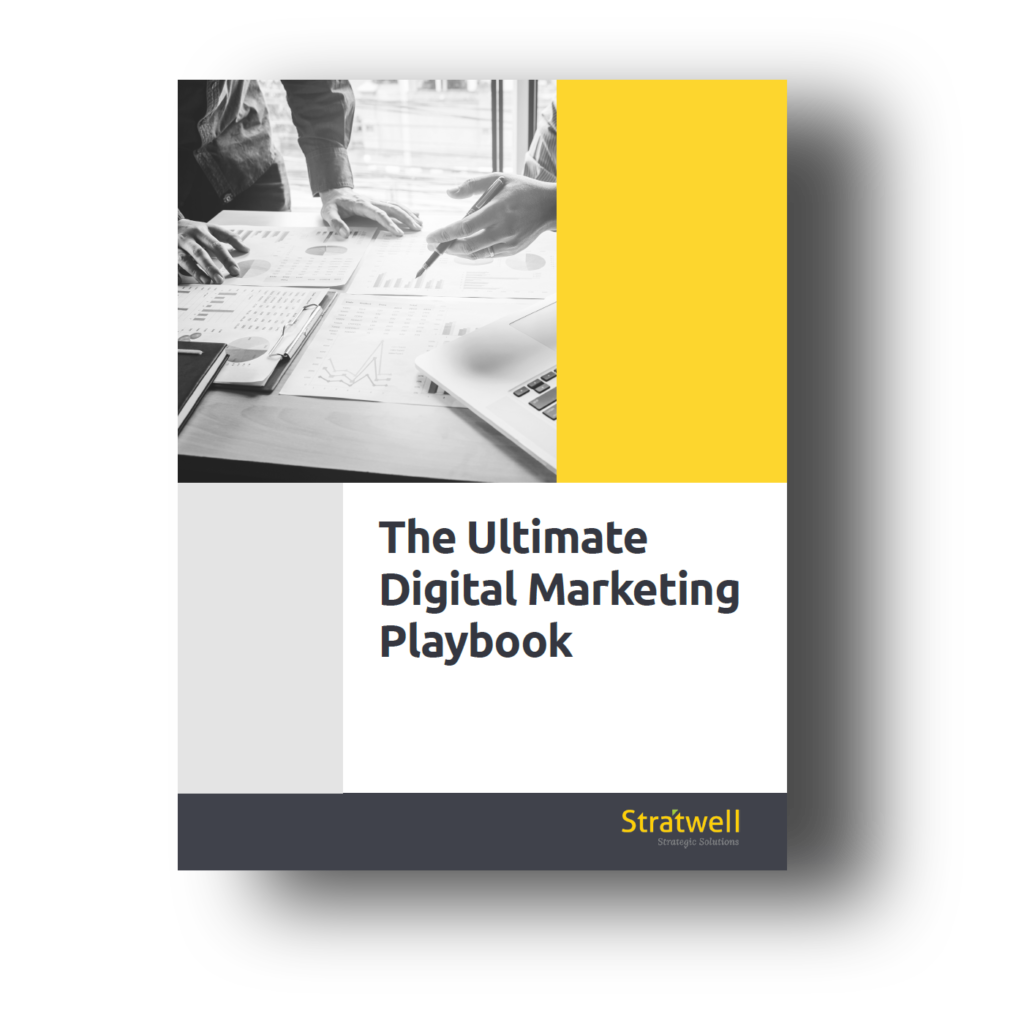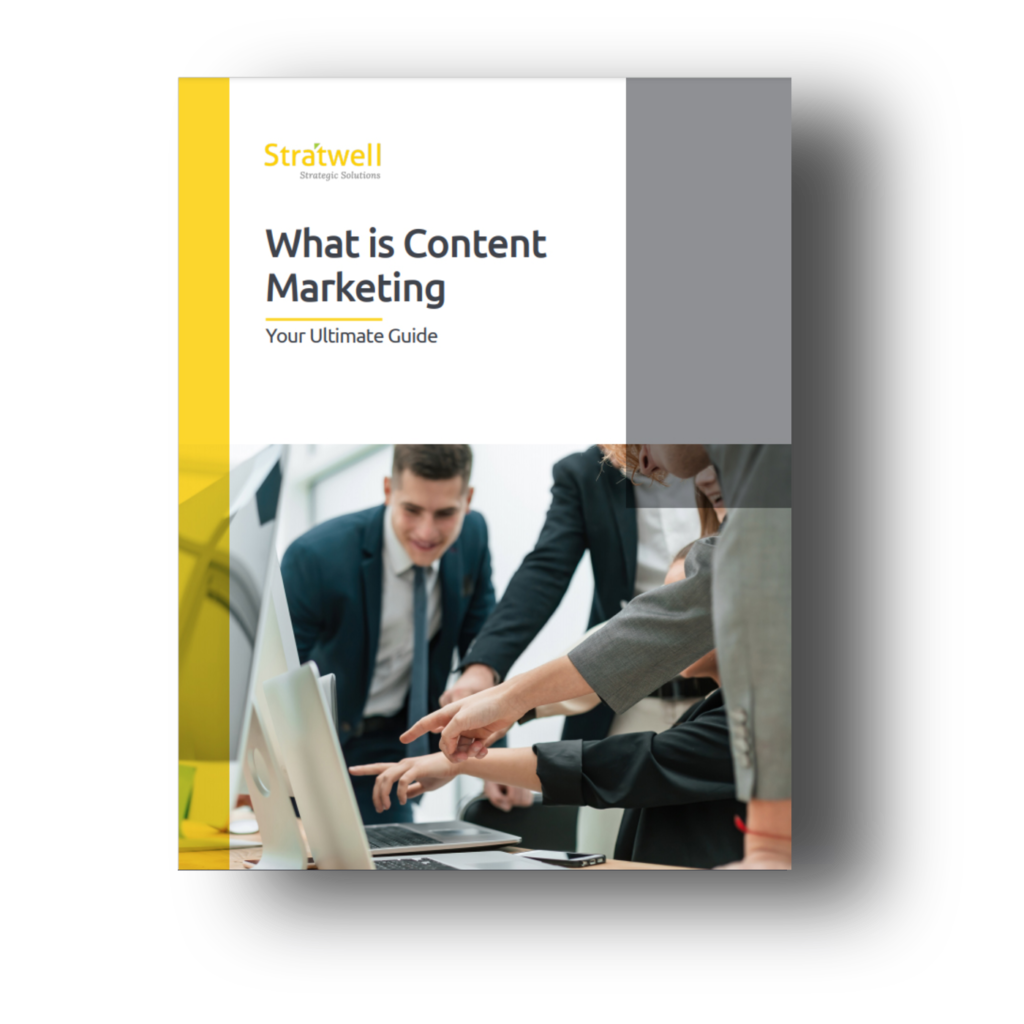Digital content distribution is part of the overall marketing strategy for distributing your content and amplifying it across different channels and platforms. Digital marketers now thrive in the attention economy where there’s an enormous amount of competition for the reader’s attention.
As marketers continue to create content, distribution remains a critical part of the overall process. Readers almost always never stumble on content while using the internet or internet related services. The fact that they come across certain content means that it has undergone targeted promotion through various media channels or platforms.
Therefore, at its core, content distribution is essentially how marketers provide their content (sharing, publishing, promoting) to their audiences through various types of media and platforms.
Types of Content
There are, of course, various types of content that marketers can use. Some of these include:
- Podcasts and interviews
- Videos
- E-books
- Case studies
- Success stories
- Infographics
- Webinars
- Blogs
Note that different types of content will require different distribution strategies.
What are the Different Types of Content Distribution Channels?
To generate optimal results, you will have to use different distribution channels depending on your audiences and your budget. There are primarily three digital content distribution channels which you can choose from:
- Owned Channels
- Earned Channels
- Paid Channels
1. Owned Channels
Owned channels include your website, your blog, your social media channels, email newsletters, and other publishing platforms that your company directly owns. This means you have full control of the channels and you decide when and what kind of content you can publish on the channel.
While owned distribution channels give you the benefit of full control, their greatest challenge is that you have to find ways to direct your audience to your channels such as your website or blog.
To learn about how blogging can help to grow your business, check out our post here.
2. Earned Channels
Earned distribution channels are where third parties only feature your content if it meets certain requirements or guidelines. It also includes creating truly remarkable content and including a call to action for readers to share the content on their social media channels and other platforms.
These third parties could be your customers, your social media followers, bloggers, journalists, or anyone who would share your content for free. Some good examples include guest posts, PR coverages, and organic sharing.
3. Paid Channels
Paid content distribution involves paying to distribute your content, primarily through pay-per-click advertising (PPC), paid influencer content, paid social ads, sponsored content, and native (paid) ads.
Paid channels also provide some level of control over aspects such as the messaging, targeted content, creative freedom, and the ability to fine-tune your content over time.
To learn more about online paid advertising, you may check out our blog post here.

How Do You Pick the Right Distribution Channel for Your Content?
When you’ve spent a lot of time creating great content, the next logical step is to figure out the ideal distribution channels. Part of the reason digital marketers increasingly find their content less effective is the fact that they are sharing it in the wrong places. Therefore, it is important for you to figure out which distribution channels you should be using to amplify your content.
A content distribution strategy should answer the following fundamental questions:
- Who is Your Audience?
- What Channels Fit Your Resources?
- Does All Your Content Connect?
- What Channels Fit Your Message?
1. Who is Your Audience?
This is the fundamental question for all your content marketing endeavours. Similarly, it’s the primary question for all your digital distribution strategies.
When creating your content, you have to be absolutely clear about the kind of audience you are targeting. An effective digital content distribution begins with understanding who your buyer persona is.
Keep tabs on the various distribution channels, i.e., the usage statistics, the average user for all the channels you are currently considering, and the trends. For instance, some social media networks may lose popularity among certain age groups. In short, your content should be distributed through channels where your targeted audience mostly uses.
To learn about the differences between target audience and buyer’s persona, check out our blog post here. For learning about how to create a buyer persona, please click here.
2. What Channels Fit Your Resources?
One of the greatest advantages of paid content distribution channels is the fact that it guarantees that your content will get in front of your audience. However, that doesn’t mean that you should spend all your marketing dollars on as many channels as you can.
You can still develop a smart content distribution plan on a small budget. Moreover, more impressions don’t usually guarantee more leads. Similar to any marketing endeavours, ROI is an important factor to consider when designing your digital content distribution strategies. Developing a genuine connection with your customers is more lucrative over the long run rather than aiming to simply maximizing your exposures on the internet.
To learn how to budget for your marketing spend, check out our blog post here.
3. Does all Your Content Connect?
Collectively, all your content works together to generate an overall impression of your overall brand story. Therefore, it should all tie into each other and have some form of consistency. For instance, it would be confusing, and perhaps even detrimental, to have different campaigns with different messaging running on various platforms.
The key is to think about your content as a whole and select channels that will help your content to work with each other. For instance, you can have your blog posts link to your YouTube videos, and the CTA of your videos to signing up to your newsletter. Connecting your content together will help you to maximize your reach and generate a compounding effect on your overall digital marketing efforts.
4. What Channels Fit Your Message?
Every digital content distribution channel has a typical audience and a specific tone, style, and vibe to it. Carefully analyse your content or marketing message and find out if it would match the distribution channel you are considering. For instance, you probably don’t want to put a technical tutorial on Snapchat if you wanted to project authority and expertise.
Why You Should Have a Content Strategy
Streamlining your content marketing efforts isn’t the easiest of tasks. As more and more marketers create high-quality content, it’s becoming increasingly harder for even the best content to reach its intended audience.
Therefore, as a digital marketer, you now need a solid digital content distribution strategy to promote and distribute your content so that you can get it in front of your targeted audience.
Success in digital marketing is often the result of two intertwining factors; creating great content and having a solid content distribution strategy.
To learn about why content marketing should be centralized to all your digital marketing efforts, check out our blog post here.
Conclusion:
With millions of blog posts, video uploads, and social media posts coming up every day, readers want to consume content that will enable them make strong emotional connections with brands.
Therefore, marketers should have a fundamental understanding of the various content distribution channels available and decide which ones would yield the best results for all their digital marketing efforts.
What are your experience with content distribution? Comment below and let us know!
Enjoy this article? Subscribe to get similar articles delivered to your inbox and don’t forget to share it with your friends.
Other Related Blog Posts:
- Why Blog? 4 Reasons Why Blogging Can Help To Grow Your Business
- An Introductory Guide to Online Paid Advertising
- Target Audience and Buyer Persona – What’s the Difference? (With Samples)
- How To Create A Buyer Persona In 4 Simple Steps
- How Much Should I Spend? 5 Simple Steps to Structure a Digital Marketing Budget Plan (Actionable Guide)
- A Simple 4-Step Guide to Creating Effective Content
- Why Content Marketing Should Be Central to Your Digital Marketing Efforts
Alan Lo, Managing Partner of Stratwell Strategic Solutions, brings a decade of entrepreneurial and business development experience. Early in his career he was instrumental in building out the distribution channels of a real estate investment firm with over $2 billion in AUM. He has then founded an investment company in 2014 which he successfully exited in 2019.












34 Comments
Excellent post. Thanks!
Thanks Mose!
Wow, how long have you ever been running a blog for? you make running it seems easy. The whole look of your site is wonderful, let alone the content!
Thanks Hildred for your kind comments!
Hi there! Love your website. Keep up the good work!
Thanks for the feedback Chandra!
This is a very useful info for me. And I am glad I’m reading your article. : D. Good job, cheers
Thanks Hershel!
Great post!
Thank you Fiona!
I have learned lot from this particular post. Thanks.
Thanks Susanna
Great content, thanks for sharing.
Thanks Dinah!
Great post!
Thanks!
Hello, great website. I have subscribed to your newsletter to get up-to-date updates. Look forward to it.
Thanks Ethan!
Great web site. Lots of useful information here. Thank you for your effort!
Thank you Derek!
I’m really impressed with your writing. Keep it up!
Thanks Erica!
Heya i am for the first time here. I found this board truly useful. It helped me out a lot.
Great to hear. Thanks Ron!
These are wonderful ideas about blogging. You have touched some pleasant points here.
Keep up the writing.
Thanks Cindi!
Great article. Maybe you can write subsequent articles to elaborate on this. Thanks!
Thanks for the suggestion Maude. I will have my team to work on this!
This is very useful information! Thank you!
Thanks Eula!
Thanks for posting something about this topic. Loved it!
Thanks Clayton!
Great post.
Thanks Lorena!